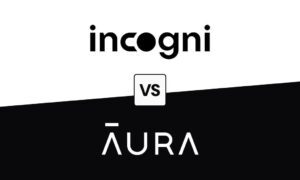Web3 is a revolutionary decentralized model that fundamentally alters online data, asset, and interaction management, which is a significant digital transformation right now. So, Web3 is very different from classical web systems. Web3 leverages blockchain technology to provide a secure, trustless, and transparent environment where users can take back control of their data and digital assets.
The backbone of this transformative shift is the development of blockchain app development services that help businesses build decentralized applications – or dApps that are robust, secure, efficient, user-centric, and promote control and security. Such apps speed up the development of smart contracts, tokenization, and DeFi, creating a more self-sufficient and permissionless web.
In this article, we are going to explore how blockchain app development services are paving the way in this transition. We will also discuss the trends that will shape the future of Web3. When you look at layer-2 scaling solutions, cross-chain interoperability, AI-enabled automation, and the convergence of Web3 with IoT and the metaverse, you’ll realize that these innovations aren’t just new technologies — they’re changing industries and creating new opportunities in the digital economy.
The Role of Blockchain in Web3 Evolution
Web3, as the successor of web2, is based on blockchain technology that allows for a decentralized network of trustless interactions: people own their data (and the interactions surrounding their data) and their transactions. Unlike the traditional Web, where everything depends on a separate server, Web3 uses distributed ledger technology (DLT) to eliminate intermediaries while ensuring you have transparency, security, and efficiency.
Connected to the above, decentralization is one of the core principles of Web3, handing off control from large organizations to the average person. Blockchain technology decentralizes data across a network of nodes, reducing the risk of data breaches and censorship and eliminating little roadblocks to failure. And this creates a roadmap for a more democratic and resilient internet.
Real-World Applications
Following are some real-world applications of blockchain technology in web3:
- DeFi: As the name implies, this lets individuals trade, lend, and borrow directly from each other, bypassing the banks.
- NFTs: These create a unique method of ownership of digital goods, including art, games, and other content.
- DAOs: They are used for decentralized governance and collective decision-making.
- Supply Chains: Such networks allow monitoring products to verify their genuineness over time. Identity
- Verification: This allows users to manage their digital identities, enabling self-sovereignty.
The Future of Blockchain Development
Blockchain technology rapidly evolves, introducing innovation and increasing productivity in many sectors. Exciting developments are paving the way for the future of decentralized systems as more sectors get on board.
Increased Adoption:
More and more industries — spanning finance and health care to supply chains — are adopting blockchain to bring transparency and ease of functionality.
Technological Advancements:
Smart contracts, cross-chain interoperability, scalability solutions, and innovations improve blockchain functionality.
Regulatory Changes:
Governments are modernizing their policies for blockchain-based economies so that they do not fall behind the curve while remaining compliant.
Enhanced Transparency:
Since blockchain’s immutable ledger is designed to create trust in digital transactions, it helps mitigate fraud and increase accountability.
Improved Security:
With cutting-edge cryptographic methods, data is shielded from cyber threats, making blockchain networks a lot safer.
Greater Efficiency:
Thanks to smart contracts, automation simplifies processes, slashing costs and speeding up transactions.
Top Web3 Trends for AI Integration
Now, we’ll explore how the fusion of web3 and AI is shaping the future of technology and forcing industries to hire blockchain app developers:
Decentralized AI:
Decentralized AI is about protecting your data from a central authority in a way that enhances privacy and access. By distributing AI models across varied nodes through blockchain technology, we can prevent data monolithic manipulation. Such a combination gives users more control over their data and helps make AI even more accurate.
AI in Healthcare:
From assisting doctors with diagnosis to predicting diseases before they happen, AI is transforming healthcare. At the same time, it ensures secure but seamless sharing of patient data in a manner that ensures privacy through blockchain technology to maintain medical records. Combined, these advancements increase the management of valuable information for patients and other fields of research without sacrificing security.
AI in Supply Chain:
AI-powered predictive analytics are revolutionizing logistics through more accurate demand forecasting and efficiency improvements. At the same time, blockchain technology is applied to supply chains, providing transparency and reducing fraud and inefficiencies. Together, these tools form a continuous, automated, data-driven supply network.
AI in Cybersecurity:
AI-powered cybersecurity systems use real-time pattern analysis to identify and respond to threats. And when blockchain is incorporated, it forms an integrally secured vetting layer that prevents data breaches and identity fraud. These technologies complement each other to strengthen network security and build trust within the user base.
AI and Web3 Gaming:
AI and Web3 gaming create a wider range of experiences that are more realistic and personalized for players that have a new depth of environments. Through blockchain technology, players can attain actual ownership of their game assets via NFTs, encouraging fair play. It is a setup that transforms gaming into a decentralized and transparent ecosystem.
Defi Advancements with AI:
AI is transforming DeFi by automating trade execution, risk assessment, and fraud detection. AI-driven financial decisions are executed automatically with smart contracts, increasing efficiency and reducing human errors. The innovation makes financial services more accessible and cuts out the intermediaries.
AI in Transportation:
Discover AI that is transforming transportation! It plots routes, manages autonomous systems, and accelerates traffic flow. For instance, block technology ensures secure data sharing in logistics, which may reduce inefficiencies while promoting transparency. These innovations collectively enhance substantially safety and efficiency in our transportation networks.
Social Media with AI:
AI is used to help compile content, identify misinformation, and increase user engagement on social media. Transparency is critical for user empowerment over their data and in the moderation of content, which can be achieved with blockchain technology. All this makes for a fairer, safer digital social space.
Federated Learning:
Federated learning allows for AI models to be trained from data across different sources without risking sensitive data being compromised. Data can be kept in a secure format, and privacy law can be adhered to through blockchain technology. This way, AI innovation is encouraged without compromising user privacy.
AI-Powered NFTs:
NFTs are empowered through AI-generated content by ensuring authenticity and unlocking fresh opportunities for creativity. Blockchain technology secures ownership records, ensuring no duplication or fraud occurs. They’re pioneering a new era in creating, trading, and valuing digital assets.
The Impact of Blockchain App Development Services
Game-changing Blockchain App Development Services for Web3 Applications enable businesses to operate on decentralized, transparent, and tamper-resistant networks. These developers are creating new companies to enhance data security and digital ownership and facilitate cross-border transactions, significantly impacting industries such as real estate, healthcare, and supply chain management.
These companies use blockchain to strengthen identity verification, manage supply chains, and establish decentralized marketplaces while reducing fraud and increasing efficiency. Trustless automation with smart contracts, blockchain-based voting systems, and content ownership models helps users own more than before.
Challenges and Considerations in Web3 Development
Several significant hurdles to web3 development must be addressed to gain widespread adoption. Some key issues are scalability, regulatory challenges, and the need for better user adoption and education.
Challenges due to Scalability and Infrastructure
The ability to handle high volumes of transactions can be restrictive for applications built on blockchain networks that suffer from slow speeds and expensive fees. While solutions like layer-2 scaling and rollups are all aimed at increasing efficiency, the challenge remains to find a way to implement these solutions without compromising security.
Regulatory and Compliance Hurdles
Global governments are increasingly trying to tame Web3, creating legal grey areas for blockchain companies. These types of businesses need to comply with standards for anti-money laundering (AML), tax regulations, and data protection consistent with their geographic operation, which, if not adhered to, would cause operational disruptions. By striking the right balance between regulation and decentralization, Web3 will be able to grow sustainably.
User Adoption and Education
Despite the potential Web3 bears, it has also remained complicated for the average user. There are things to overcome, like wallet management, private key safekeeping, and learning how to use apps. To onboard the world, developers must focus on UI, simple onboarding processes, and education to make blockchain interactions as simple as possible.
Final Thoughts
The rise of blockchain app development services is shaking up the digital world by promoting decentralization, security, and transparency. From DeFi to AI and digital ownership, we are gradually transitioning towards a more user-centric and efficient internet as different industries are beginning to utilize blockchain technology.
Of course, there are still challenges ahead, such as scalability, regulations, and adoption, but the incremental developments in blockchain infrastructure, as well as education, are laying the framework for mass adoption. This will facilitate new experiences and interactions, require new protocols to be built, and pave the way for an open, trustless, permissionless world. What do you think about the future of Web3? Dive into more in-depth blogs about blockchain technology to keep yourself in the loop on this thrilling evolution!



































